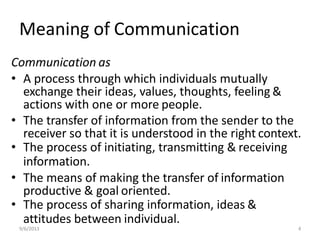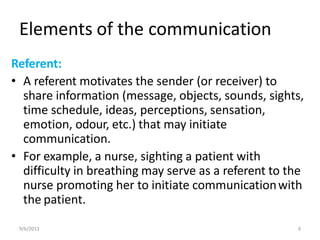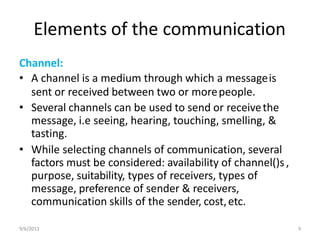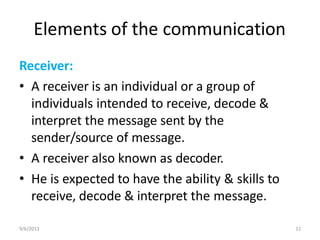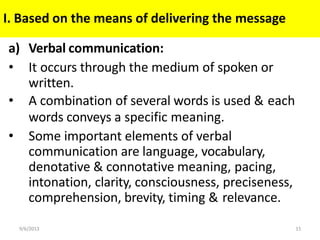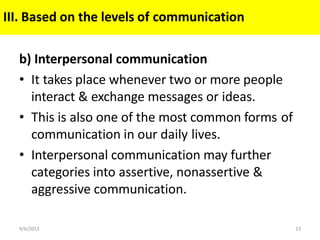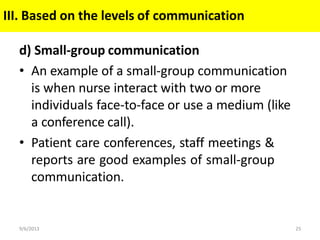The document defines communication and describes its key elements and types. Communication is defined as the exchange of information between individuals using symbols. The main elements are the sender, message, channel, receiver, feedback, and environment. Communication can be verbal, nonverbal, formal or informal. It occurs at the intrapersonal, interpersonal, group, organizational and public levels. Communication patterns include one-way, two-way, one-to-one, one-to-many and many-to-one. The document provides examples to illustrate communication processes and classifications.



